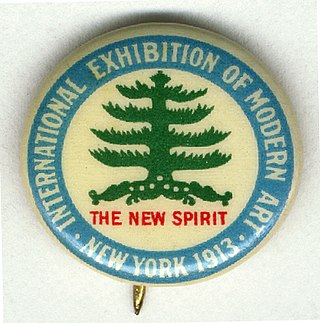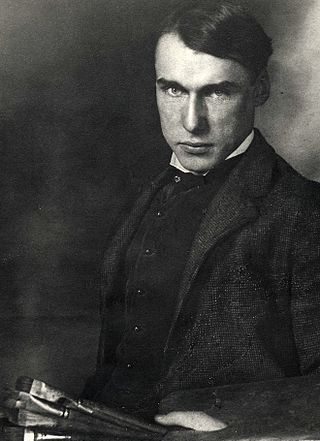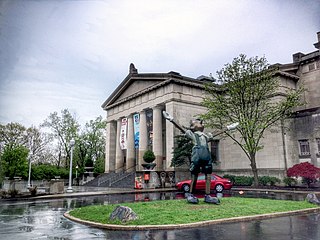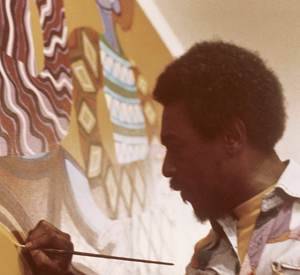
The 1913 Armory Show, also known as the International Exhibition of Modern Art, was organized by the Association of American Painters and Sculptors. It was the first large exhibition of modern art in America, as well as one of the many exhibitions that have been held in the vast spaces of U.S. National Guard armories.

William McGregor Paxton was an American painter and instructor who embraced the Boston School paradigm and was a co-founder of The Guild of Boston Artists. He taught briefly while a student at Cowles Art School, where he met his wife Elizabeth Okie Paxton, and at the Museum of Fine Arts School in Boston. Paxton is known for his portraits, including those of two presidents—Grover Cleveland and Calvin Coolidge—and interior scenes with women, including his wife. His works are in many museums in the United States.

Joseph Rodefer DeCamp was an American painter and educator.

Henry Ossawa Tanner was an American artist who spent much of his career in France. He became the first African-American painter to gain international acclaim. Tanner moved to Paris, France, in 1891 to study at the Académie Julian and gained acclaim in French artistic circles. His painting Daniel in the Lions' Den was accepted into the 1896 Salon, the official art exhibition of the Académie des Beaux-Arts in Paris. Tanner's Resurrection of Lazarus was purchased by the French government after winning the third-place medal at the 1897 Salon. In 1923, the French government elected Tanner chevalier of the Legion of Honor.

Charles Sheeler was an American artist known for his Precisionist paintings, commercial photography, and the avant-garde film, Manhatta, which he made in collaboration with Paul Strand. Sheeler is recognized as one of the early adopters of modernism in American art.

Walter Francis Kuhn was an American painter and an organizer of the famous Armory Show of 1913, which was America's first large-scale introduction to European Modernism.

Randolph Rogers was an American Neoclassical sculptor. An expatriate who lived most of his life in Italy, his works ranged from popular subjects to major commissions, including the Columbus Doors at the U.S. Capitol and American Civil War monuments.

The Cincinnati Art Museum is an art museum in the Eden Park neighborhood of Cincinnati, Ohio. Founded in 1881, it was the first purpose-built art museum west of the Alleghenies, and is one of the oldest in the United States. Its collection of over 67,000 works spanning 6,000 years of human history make it one of the most comprehensive collections in the Midwest.

Frank Duveneck was an American figure and portrait painter.
The following are the baseball events of the year 1938 throughout the world.

Louis Schanker was an American abstract artist.
Adrian Saxe is an American ceramic artist who was born in Glendale, California in 1943. He lives and works in Los Angeles, California.

John Seery is an American artist who is associated with the lyrical abstraction movement. He was born in Maspeth, New York, was raised in Flushing, Queens and as a teen, moved to Cincinnati, Ohio.

Moses Soyer was an American social realist painter.

Johannes Sophus Gelert (1852–1923) was a Danish-born sculptor, who came to the United States in 1887 and during a span of more than thirty years produced numerous works of civic art in the Midwest and on the East Coast.

Charles Robert Searles was an African American artist born in Philadelphia in 1937. He studied at the Pennsylvania Academy of Fine Arts and was active from the 1960s until he died in 2004 from complications from a stroke.
Frances Julia Farrand Dodge was an American artist and teacher.

Hyman J. Warsager (1909–1974) was an American artist known for his printmaking.















